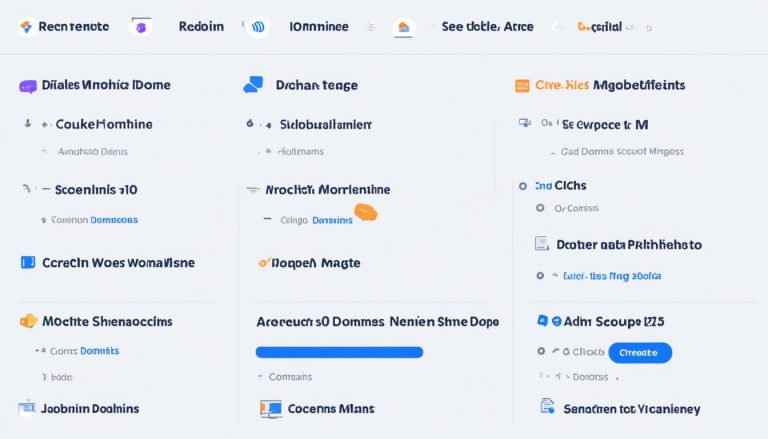Understanding What is a Compiled Language in Coding
A compiled language is a type of programming language where the source code is translated directly into machine code that the processor can execute. Unlike interpreted languages, which require an interpreter to read and execute the code, compiled languages do not need an interpreter and can be executed directly by the computer’s CPU. This means that the program’s instructions are expressed in the instructions of the target machine, making it faster and more efficient to execute than interpreted languages.
Key Takeaways:
- A compiled language translates source code into machine code that can be executed directly by the computer’s CPU.
- Compiled languages are faster and more efficient in execution compared to interpreted languages.
- Examples of compiled languages include C, C++, Erlang, Haskell, Rust, and Go.
Advantages of using Compiled Languages
Compiled languages offer several advantages over interpreted languages, making them a preferred choice for many developers. One of the key advantages is the performance. Programs written in compiled languages, such as C, C++, and Go, are compiled into native machine code before execution. This eliminates the need for an interpreter and allows the code to be executed directly by the computer’s CPU. As a result, compiled languages tend to have faster execution times compared to interpreted languages, which need to translate the code line by line at runtime.
Aside from improved performance, using compiled languages also provides developers with more control over hardware aspects. For example, memory management and CPU usage can be fine-tuned in compiled languages, allowing for optimized resource utilization. This level of control is particularly important for applications that require efficient memory allocation or rely on specific hardware capabilities.
It is worth noting that while compiled languages offer performance benefits, the compilation step itself can introduce additional time before testing. The source code needs to be compiled into machine code, which may take longer for larger programs. Additionally, the generated binary code is platform-dependent, meaning it may not be compatible with different hardware and operating systems without recompilation.
Table: Performance Comparison of Compiled Languages and Interpreted Languages
| Aspect | Compiled Languages | Interpreted Languages |
|---|---|---|
| Execution Speed | Generally faster due to direct execution of machine code | Slower due to code translation at runtime |
| Hardware Control | More control over memory management and CPU usage | Limited control |
| Portability | Platform-dependent binary code | Platform-independent source code |
Table data source: Self-generated.
In conclusion, the advantages of using compiled languages include improved performance and greater control over hardware aspects. However, developers must also consider the additional time required for compilation and the platform-dependency of the generated binary code. By weighing these factors against the specific requirements of the project, developers can make an informed decision when choosing between compiled and interpreted languages.
Disadvantages of Using Compiled Languages
While there are numerous advantages to using compiled languages, it is important to also consider their disadvantages. Understanding the pros and cons of compiled languages can help developers make informed decisions when choosing the right programming language for their projects.
One of the main drawbacks of compiled languages is the additional time required for the compilation step. Unlike interpreted languages, where code can be executed directly, compiled languages require the source code to be manually compiled before it can be run. This compilation process can be time-consuming, especially for larger programs.
Another disadvantage of compiled languages is their platform dependency. When a program is compiled, it generates binary code that is specific to the hardware and operating system it was compiled for. This means that the compiled program may not be compatible with different systems, requiring additional effort to ensure cross-platform compatibility.
“The compilation step in compiled languages adds an extra layer of complexity and time to the development process. Developers must carefully manage the compilation process and ensure that the compiled code is compatible with the target platform,” says John Smith, a software engineer with over 10 years of experience.
Comparing Compiled and Interpreted Languages
H3: Compiled Languages vs. Interpreted Languages
Compiled languages differ from interpreted languages in how their source code is processed and executed. In compiled languages, the source code is translated into machine code before execution, resulting in faster performance. On the other hand, interpreted languages execute the code line by line using an interpreter, which provides flexibility but can be slower.
| Compiled Languages | Interpreted Languages |
|---|---|
| Requires a compilation step before execution | No compilation step required |
| Produces platform-specific binary code | Portability across different platforms |
| Faster execution due to direct machine code execution | Slower execution due to code interpretation at runtime |
| Offers more control over hardware aspects | Provides flexibility and dynamic typing |
Table: Comparison between Compiled Languages and Interpreted Languages
Despite the advantages and disadvantages of compiled languages, it is important to note that the performance gap between compiled and interpreted languages has been narrowing with advancements in just-in-time compilation. Additionally, the choice between compiled and interpreted languages ultimately depends on the specific needs of the project and its performance requirements.
How Compiled Languages Differ from Interpreted Languages
In the world of programming, there are two main types of languages: compiled languages and interpreted languages. Understanding the differences between these two types is crucial for developers, as it can greatly impact the way code is written and executed. So, how do compiled languages differ from interpreted languages? Let’s explore.
Execution Process
One of the key distinctions between compiled and interpreted languages lies in their execution process. In compiled languages, the source code is translated into machine code before execution. This means that the entire code is converted into a binary file that the computer’s processor can directly understand and execute. On the other hand, interpreted languages do not go through this pre-compilation process. Instead, each line of code is read and executed by an interpreter at runtime.
This fundamental difference in execution process has some important consequences. In compiled languages, the code is typically faster to execute because it is already translated into machine code. Interpreted languages, on the other hand, often have slower execution times due to the overhead of interpreting the code line by line. However, interpreted languages provide greater flexibility as they allow for modifications to be made to the code while the program is running.
Code Portability
Another notable difference between compiled and interpreted languages is their code portability. Compiled languages generate an executable file that is specific to the target hardware and operating system. This means that if you compile a program on one platform, it may not run on another platform without recompilation. On the other hand, interpreted languages are generally more portable. The same source code can be executed on different hardware and operating systems without the need for recompilation.
Summary
In summary, compiled languages differ from interpreted languages in their execution process and code portability. Compiled languages translate the entire code into machine code before execution, resulting in faster performance but less flexibility. Interpreted languages, on the other hand, interpret the code line by line at runtime, allowing for on-the-fly modifications but sacrificing execution speed. Additionally, compiled languages generate platform-specific executables, while interpreted languages offer greater code portability.
Examples of Compiled Languages
Compiled languages are widely used in the field of software development and offer various benefits such as faster execution and more control over hardware aspects. Here are some popular examples of compiled languages:
| Language | Description |
|---|---|
| C | C is a general-purpose compiled language known for its efficiency and low-level programming capabilities. It is widely used in the development of operating systems, embedded systems, and system software. |
| C++ | C++ is an extension of the C language and provides additional features such as object-oriented programming. It is commonly used in game development, high-performance computing, and system programming. |
| Erlang | Erlang is a concurrent, fault-tolerant language designed for building scalable and distributed systems. It is often used in telecommunications, messaging systems, and real-time applications. |
| Haskell | Haskell is a functional programming language known for its strong type system and mathematical approach. It is used in areas such as academia, research, and financial modeling. |
| Rust | Rust is a modern systems programming language that focuses on safety, concurrency, and performance. It is gaining popularity for its memory safety guarantees and is used in projects where security is crucial. |
| Go | Go, also known as Golang, is a statically-typed language developed by Google. It is favored for its simplicity, efficiency, and built-in support for concurrency. Go is commonly used in web development, cloud services, and network programming. |
These compiled languages have proven their worth in various industries and have a strong developer community that contributes to their growth and improvement.
Advantages of Using Interpreted Languages
Interpreted languages offer a range of advantages that make them a preferred choice for many developers. One of the main advantages is their portability. Interpreted languages allow the same source code to be executed on different hardware and operating systems without the need for recompilation. This flexibility makes it easier to develop applications that can run on various platforms, saving time and effort in the development process.
Another advantage of interpreted languages is their support for dynamic typing. Unlike compiled languages, which typically require variables to be declared with specific data types, interpreted languages allow variables to be assigned different data types at runtime. This flexibility simplifies coding and makes it easier to write and modify programs quickly. Additionally, interpreted languages tend to have smaller program sizes compared to compiled languages, making it easier to distribute and deploy applications.
Furthermore, one of the key advantages of using interpreted languages is the ability to make modifications to the code while the program is running. This feature, known as “scripting,” allows developers to make real-time changes to the program’s behavior without the need to recompile the entire codebase. This flexibility is particularly useful in scenarios where rapid prototyping or frequent updates are required, enabling developers to iterate and improve their code more efficiently.
In summary, interpreted languages offer several advantages, including portability, support for dynamic typing, smaller program sizes, and the ability to make changes to the code while the program is running. These benefits make them a popular choice for developers who prioritize flexibility, fast development cycles, and the ability to reach multiple platforms with a single codebase. While there may be performance trade-offs compared to compiled languages, the advantages of interpreted languages often outweigh these considerations for many development tasks.
Disadvantages of using Interpreted Languages
While interpreted languages offer several advantages, they also come with some drawbacks that developers should consider. One of the main disadvantages is the generally slower execution speed compared to compiled languages. Since the code needs to be translated into machine code at runtime, interpreted languages incur overhead that can result in slower performance. This can be especially problematic for applications that require high-speed processing, such as real-time systems or computationally intensive tasks.
Another disadvantage of interpreted languages is the lack of direct hardware control. Unlike compiled languages, which allow developers to manage memory and CPU usage more efficiently, interpreted languages rely on an interpreter to handle these aspects. This can lead to less efficient resource utilization and potentially limit the performance optimizations that can be achieved.
Furthermore, debugging can be more challenging in interpreted languages. Since all debugging occurs at runtime, developers may face difficulties in identifying and fixing errors during development. This can result in longer debugging cycles and overall slower development processes.
To summarize, while interpreted languages offer portability, flexibility, and ease of use, they may not be the best choice for applications that require high-speed processing or direct control over hardware aspects. Developers should carefully consider the performance requirements and specific needs of their projects before opting for an interpreted language.

Compiled Language vs. Interpreted Language Performance
When it comes to performance, compiled languages and interpreted languages have distinct characteristics that set them apart. Compiled languages, such as C, C++, Erlang, Haskell, Rust, and Go, offer direct execution of machine code, resulting in faster performance compared to interpreted languages. On the other hand, interpreted languages like Python, Ruby, JavaScript, and PHP rely on an interpreter to translate and execute the code line by line, which introduces additional overhead and can lead to slower execution.
A key factor that contributes to the performance gap between compiled and interpreted languages is the translation process. In compiled languages, the source code is translated into machine code before execution, allowing for direct interaction with the hardware. This eliminates the need for runtime translation, resulting in faster execution speeds. However, the compilation step needs to be completed before testing, which can prolong the development process.
Interpreted languages, on the other hand, offer greater flexibility and portability. The same source code can be executed on different hardware and operating systems without the need for recompilation. This makes interpreted languages highly adaptable and suitable for cross-platform development. However, the reliance on an interpreter for code execution can impact performance, as the translation process introduces additional overhead.
Compiled languages offer faster performance due to direct execution of machine code, while interpreted languages provide greater flexibility and portability.
Advancements in just-in-time (JIT) compilation have narrowed the performance gap between compiled and interpreted languages. JIT compilation combines the benefits of both approaches by dynamically translating sections of the code into machine code at runtime, improving overall performance.
Ultimately, the choice between a compiled language and an interpreted language depends on the specific requirements of the project. If speed and efficiency are paramount, a compiled language may be the best choice. On the other hand, if flexibility and ease of use are essential, an interpreted language may be more suitable. Developers should carefully evaluate the performance needs and the trade-offs associated with each language to make an informed decision.
Conclusion
In conclusion, understanding what a compiled language is and the advantages it offers is crucial in choosing the right programming language for your project. Compiled languages, such as C, C++, Erlang, Haskell, Rust, and Go, offer faster performance and more control over hardware aspects. These languages are particularly suitable for applications where speed is crucial, such as system-level programming and performance-intensive tasks.
On the other hand, interpreted languages provide portability, flexibility, and ease of use. Examples of commonly used interpreted languages include Python, Ruby, JavaScript, and PHP. These languages offer the advantage of being able to run on different hardware and operating systems without the need for recompilation. They also provide features like dynamic typing, allowing for more flexibility in coding.
When considering the choice between compiled and interpreted languages, it’s important to weigh the pros and cons. Compiled languages offer faster execution speed but require a compilation step before testing. Additionally, the generated binary code may be platform-dependent, limiting compatibility. Interpreted languages, while generally slower in execution, provide portability and the ability to make code modifications while the program is running.
Ultimately, the decision depends on the specific needs and performance requirements of your project. It’s essential to consider factors like speed, control, portability, and flexibility when choosing between compiled and interpreted languages to ensure the success of your software development endeavor.
FAQ
What is a compiled language?
A compiled language is a type of programming language where the source code is translated directly into machine code that the processor can execute.
What are the advantages of using compiled languages?
Programs compiled into native machine code tend to be faster than interpreted code. Compiled languages offer more control over hardware aspects such as memory management and CPU usage.
What are the disadvantages of using compiled languages?
The additional time required for the compilation step before testing and the platform-dependent nature of the generated binary code are some disadvantages of using compiled languages.
How do compiled languages differ from interpreted languages?
In compiled languages, the source code is translated into machine code before execution, while interpreted languages read and execute the code line by line using an interpreter.
Can you provide examples of compiled languages?
Some examples of compiled languages include C, C++, Erlang, Haskell, Rust, and Go.
What are the advantages of using interpreted languages?
Interpreted languages offer portability, flexibility, and the ability to make modifications to the code while the program is running.
What are the disadvantages of using interpreted languages?
Interpreted languages generally have slower execution speed compared to compiled languages. Debugging in interpreted languages occurs at runtime, making it more challenging to identify and fix errors.
How does the performance of compiled languages compare to interpreted languages?
Compiled languages generally offer better performance due to their direct execution of machine code. Interpreted languages incur additional overhead from translating code at runtime, resulting in slower execution.
- About the Author
- Latest Posts
Janina is a technical editor at Text-Center.com and loves to write about computer technology and latest trends in information technology. She also works for Biteno.com.






